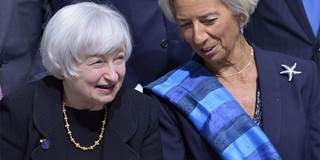Central bankers continue to fret about frothy asset markets – as well they should, given the financial crisis of 2008-2009. But, rather than standing idly by, policymakers should be developing a set of tools specifically tailored to limit the buildup of financial-sector risk.
MONTEVIDEO – Central bankers continue to fret about frothy asset markets – as well they should, given the financial crisis of 2008-2009. Having been burned once, they are now doubly shy. And China’s recent stock-market plunge has certainly not eased their fears.
Securities prices are extraordinarily high, considering the backdrop of flaccid economic growth. Bond prices have soared on the back of quantitative easing by the Bank of Japan, the Federal Reserve, and the European Central Bank. Property prices from London to San Francisco have risen to nosebleed-inducing levels. What, if anything, should be done to minimize the risks of a rapid and sharp asset-price reversal?
For many years, this question was framed according to the “lean versus clean” debate: Should central banks “lean” against bubbles, damping down asset prices that create risks to financial stability, or just clean up the mess after bubbles burst? Proponents of the latter approach, such as former Fed Chair Alan Greenspan, express doubt that policymakers can reliably identify bubbles, and are generally uneasy about managing asset prices.

MONTEVIDEO – Central bankers continue to fret about frothy asset markets – as well they should, given the financial crisis of 2008-2009. Having been burned once, they are now doubly shy. And China’s recent stock-market plunge has certainly not eased their fears.
Securities prices are extraordinarily high, considering the backdrop of flaccid economic growth. Bond prices have soared on the back of quantitative easing by the Bank of Japan, the Federal Reserve, and the European Central Bank. Property prices from London to San Francisco have risen to nosebleed-inducing levels. What, if anything, should be done to minimize the risks of a rapid and sharp asset-price reversal?
For many years, this question was framed according to the “lean versus clean” debate: Should central banks “lean” against bubbles, damping down asset prices that create risks to financial stability, or just clean up the mess after bubbles burst? Proponents of the latter approach, such as former Fed Chair Alan Greenspan, express doubt that policymakers can reliably identify bubbles, and are generally uneasy about managing asset prices.